Well, What are superconductors anyway? When a material or an alloy shows absolute zero resistance (electrical resistance). A state is known as the superconducting state of a material.
On one hand, superconductive materials are usually most effective around absolute zero temperature. On the other hand, superconductivity occurs in certain substances around 160°K (extreme pressure is required). Therefore, achieving superconductivity is quite a hard task.
And because of that, applications of superconductors has remained limited in use. Let us discuss some of the known Superconductor Applications And It’s Uses. I know you will love it. Simply because we will talk about applications of superconductors in MRI till the world’s largest particle accelerator in the world.
Superconductors In MRI
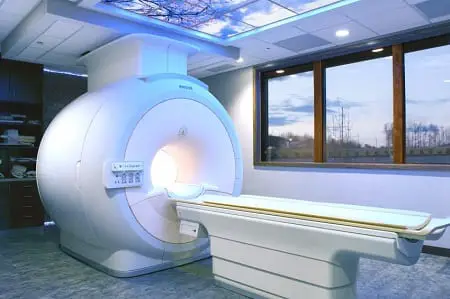
Applications of superconductors in the medical line are being used since the development of the MRI machine around 1980. In case, if you don’t know; Previously MRI (Magnetic Resonance Imaging) was known as NMRI (Nuclear Magnetic Resonance Imaging). But the word Nuclear was dropped in the later years.
Uses Of MRI
One of the most important advantages of MRI is that it helps to check what is happening inside the human body. I mean, without even performing actual surgery. Similarly, uses of MRI include the diagnosis of animals or even nonliving beings too.
Now, in order to understand how superconductors work in MRI. At first, you need to know the different parts of the MRI machine. Or, how does an MRI work?
Components Of Mri machine
Basically, the working principle of MRI directly depends on the four main parts of the MRI machine. These are a conductive magnet, Shim Coil, Gradient System, and, Radio Frequency System. The conductive magnet is the most essential one.
The rest of the three are just supporting the functioning or working of the MRI machines. If I talk in terms of technicality, any magnet can be used for the proper working of an MRI machine.
These conductive magnets can be Conventional Permanent Magnet, Temporary Magnet, Resistive Electromagnets. Or, simply it can be a Superconducting Magnet.
Must read, A Brief Introduction To Zener Diode
Nowadays, the most preferred one is superconducting magnets. Simply because of its size difference as compared to the conventional Magnets. In fact, superconducting magnets are also much efficient in terms of energy losses that occurred.
The most commonly used superconducting materials or alloy is Niobium-Titanium (type-II superconductor). Despite its extremely high construction cost, these Niobium-Titanium Superconducting magnets are most commonly used in MRI machines.
Superconducting Cables For Power Transmission
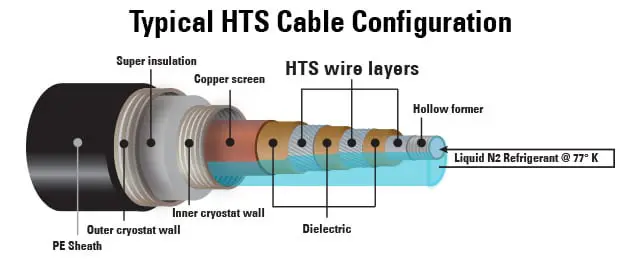
The next one in my list of Superconductors applications is Superconducting cables. Well, it’s not a hidden fact that while transferring power from one place to another, a significant amount of energy is lost.
In fact, sometimes power loss exceeds 20 to 25 % of generated electricity. Therefore, in order to minimize power loss, superconducting cables should be used in place of ordinary cables. By ordinary cables, I mean aluminum or copper wires.
How Could Superconductors Improve Power Transmission?
Well, the discovery of high-temperature superconductors gave rise to the thought; that superconducting materials can be used for the lossless transmission of electricity.
Comparatively, Superconducting cables drastically minimized power loss in terms of electrical resistivity. Though there are still some losses (2% or 3 %)occurring due to the use of coolant material for achieving the superconductivity.
See also, A Brief Introduction To Laser Diode
On the other hand, the production cost of the superconducting power lines is quite high. As a result, only a few private companies are commercially producing such superconducting power lines. These companies are Consolidated Edison, American Superconductor, etc.
Hypothesis Of Super Electricity Grid
Not to mention, there is one more theoretical base of achieving 0% loss during power transmission. A phenomenon still in its emerging state; famously known as the Super Grid.
According to the so-called hypothesis of the super grid, the loss occurring due to the use of coolant can be eradicated by coupling the power transmission line with liquid hydrogen.
But sadly, in order to convert that theoretical base to its practical application, we still have to wait for a decade or some.
Superconducting Quantum Interference Device
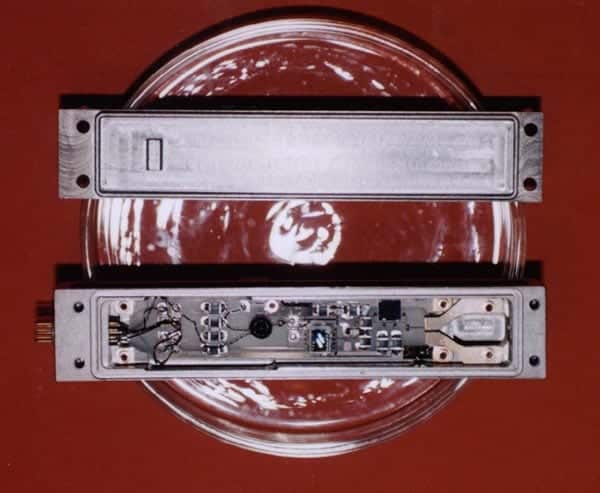
Superconducting Quantum Interference Device (SQUID) is basically one of the applications of the Josephson Effect. SQUID consists of a superconducting loop having a Josephson junction (sometimes one, sometimes two).
Recommended, Top 6 Applications Of Boyle’s Law
Squid Magnetometer is a device that can precisely measure even the smallest fraction of change in the magnetic field.
Types Of SQUID
On the basis of production cost and sensitivity, SQUIDs can be bifurcated into two different types. These are DC SQUID and RF SQUID.
- RF SQUIDs are less sensitive and production cost is low. On the other hand, DC SQUIDs are highly sensitive and a bit costly as compared to RF SQUIDs
- RF SQUIDs primarily consist of one Josephson Junction. On the other hand, DC SQUIDs consists of two Josephson Junction.
- Their working Principle (RF SQUIDs) is based on the AC Josephson Effect. On the other hand, DC SQUID’s working principle is based on the DC Josephson Effect.
Superconducting Materials For SQUID
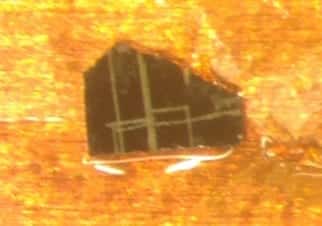
The conventional superconducting materials used for making SQUID Magnetometer is pure niobium cooled with liquid helium.
But nowadays with the recent developments in the field of hts magnets, the conventional superconducting materials are being replaced with High-temperature superconductors specially YBCO cooled with liquid nitrogen.
Simply because Liquid Nitrogen is cheaper and easy to handle as compared to conventional Liquid Helium.
Uses Of SQUID
SQUID magnetometers are generally used for the detection of land mines. In fact, they are also successfully used in different fields of science and technology.
On the other hand, geologists are also using the SQUID detector to detect the earth’s magnetic field to understand the structure of Earth’s Crust.
Large Hadron Collider – A Particle Accelerator
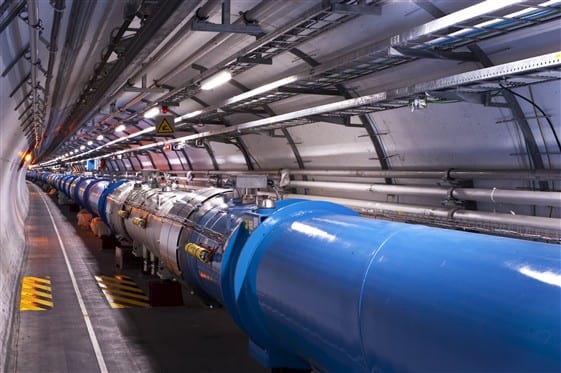
Can you guess? What will be the most important part of the world’s largest as well as the most powerful machine? Well, it’s SUPERCONDUCTING MAGNETS.
Large Hadron Collider – a type of particle accelerator that cannot accelerate particles to the desired speed (closer to the speed of light) without the help of Superconducting magnets.
Well, in order to understand how superconducting materials help the Large Hadron Collider to function properly. At first, we have to understand that what is a particle accelerator?
Well, it’s a machine to accelerate speed as well as the energy of the subatomic particles to the desired level. They are mostly used for doing research and study in particle physics.
Nowadays there are different types of particle accelerators. Out of which, the Large Hadron Collider is the most powerful as well as the largest particle accelerator in the world.
Real Life Particle Accelerator

The simplest example of a real-life particle accelerator we use (or once used) in our day to day life is an old television set that uses Cathode Ray Tube. CRT was basically used to accelerate the speed of electrons up to 30 % of the speed of light.
Magic Of Superconductors
Superconductors are used for accelerating the particles in the Large Hadron Collider. The internal structure of LHC contains a large number of powerful superconductors to generate an intense amount of magnetic field to make extremely powerful electromagnets; which in return accelerates the particle nearly to the speed of light.
In order to keep these superconducting magnets (an alloy of copper-clad Niobium-Titanium) at the operating temperature i.e approximately 1.9°K or -271.25 °C; approximately 95 tonnes of superfluid Helium-4 is used as the coolant; making this atom-smashing machine the coldest place on earth. Well, who knows may around some galaxies too.
Maglev – Magnetic Levitation Train

Last but not least one in my list of superconductors applications is Maglev Train. Maglev Trains basically work on the Superconducting Magnetic Levitation Phenomenon.
With the help of Magnetic Levitation, trains can be made afloat above the strong magnet which will, in turn, remove the friction between the train and its track.
Types Of Superconductor Used In Maglev
A magnetic rail primarily works on two sets of superconducting magnets. One of them is used to repel the train from touching the track. So that there will be no friction between the train and track. And, the other superconducting magnet is used to push the train to move forward on the track with greater speed.
Well, so many maglev train projects practically got started. But after some time the projects got abandoned or shelved. The list of abandoned or shelved maglev projects includes United Kingdom’s Low-Speed Maglev Shuttle, Germany’s Magnetbahn, or Canada’s High-Speed Surface Transport System, etc.
Still, there are some practically operating Maglev trains in the world. These are the Japanese Maglev Train, South Korea’s Incheon Airport Maglev, and at last China’s Shanghai Maglev Train.
On April 21, 2015, the highest ever speed was recorded by the maglev train is 603 km/h, by Japanese JR Central’s LO superconducting maglev train system.
That’s it for this post. If you like this article, share it if you like it, like it if you share it. You can also find us on Mix, Twitter, Pinterest, and Facebook.